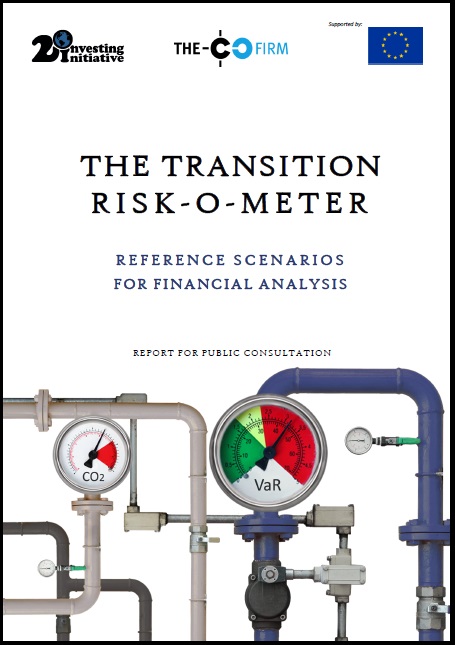The Transition Risk-O-Meter
EXECUTIVE SUMMARY
This report constitutes the first attempt to develop transition scenarios involving over 30 parameters across 8 sectors directly tailored for financial risk and scenario analysis by companies, equity and credit research analysts, and financial institutions.
The report contains two transition risk scenarios – a limited climate transition (LCT) scenario associated with 3°-4°C decarbonisation range and an ambitious climate transition (ACT) scenario, seeking to approximate an outcome associated with a 2°C transition and building in particular on the 2°C scenarios of the International Energy Agency (IEA). The report develops over 30 individual risk parameters across 8 sectors (fossil fuels, electric power, automobile, cement, steel, aviation, and shipping). You can get access to the dynamic version of the indicators through the ET Risk project Scenario Selector online tool here. Part I presents the analytical framework for the scenarios. Part II provides the detailed parameters and indicators for use in financial modelling.
The report responds to the fact that traditional reference decarbonisation scenarios are not designed for financial analysis.
‘Traditional’ reference decarbonisation scenarios are a core staple of climate policymaking and the dialogue around climate goals. There are a range of actors involved in developing these scenarios in the annual reports of private and public companies or as part of commissioned research. Notable examples include the scenarios of international organizations (e.g. IEA), NGOs (e.g. Greenpeace, WWF), and the private sector (e.g. Shell, Enerdata). The challenge with these so-called traditional decarbonisation scenarios however is that they have not been designed with the question of risk analysis at company or financial market level in mind. By extension, they exhibit a number of key challenges with regard to their use for risk analysis, in particular in regard to the design of the indicators, their coverage and scope, their lack of country-level specificity, as well a lack of agreement on a common reference scenario.
The report overcomes this constraint by enhancing and enriching decarbonisation scenarios. It can be used for free by any third party seeking to respond to the Financial Stability Board Task Force on Climate-related Financial Disclosures recommendations, shareholder pressure on scenario analysis, and potential regulatory guidance.
The report creates a framework around this process that can be replicated by interested third-parties, by defining a five step approach (visualized below). This approach uses traditional decarbonisation scenarios as a base, determines the scope of indicators and sectors (as well as country granularity), and then determines the scenario belief with regard to the trade-offs between policy and market drivers, as well as the associated ambition associated with each. It then defines the key sources for enhancement used to expand and, where required, independently model missing indicators. The objective with this framework is thus not to build a general equilibrium, cross-sectorially consistent climate scenario, but rather to collate the best evidence for each sector as to its potential evolution over time.
To download the full report, please click here.

